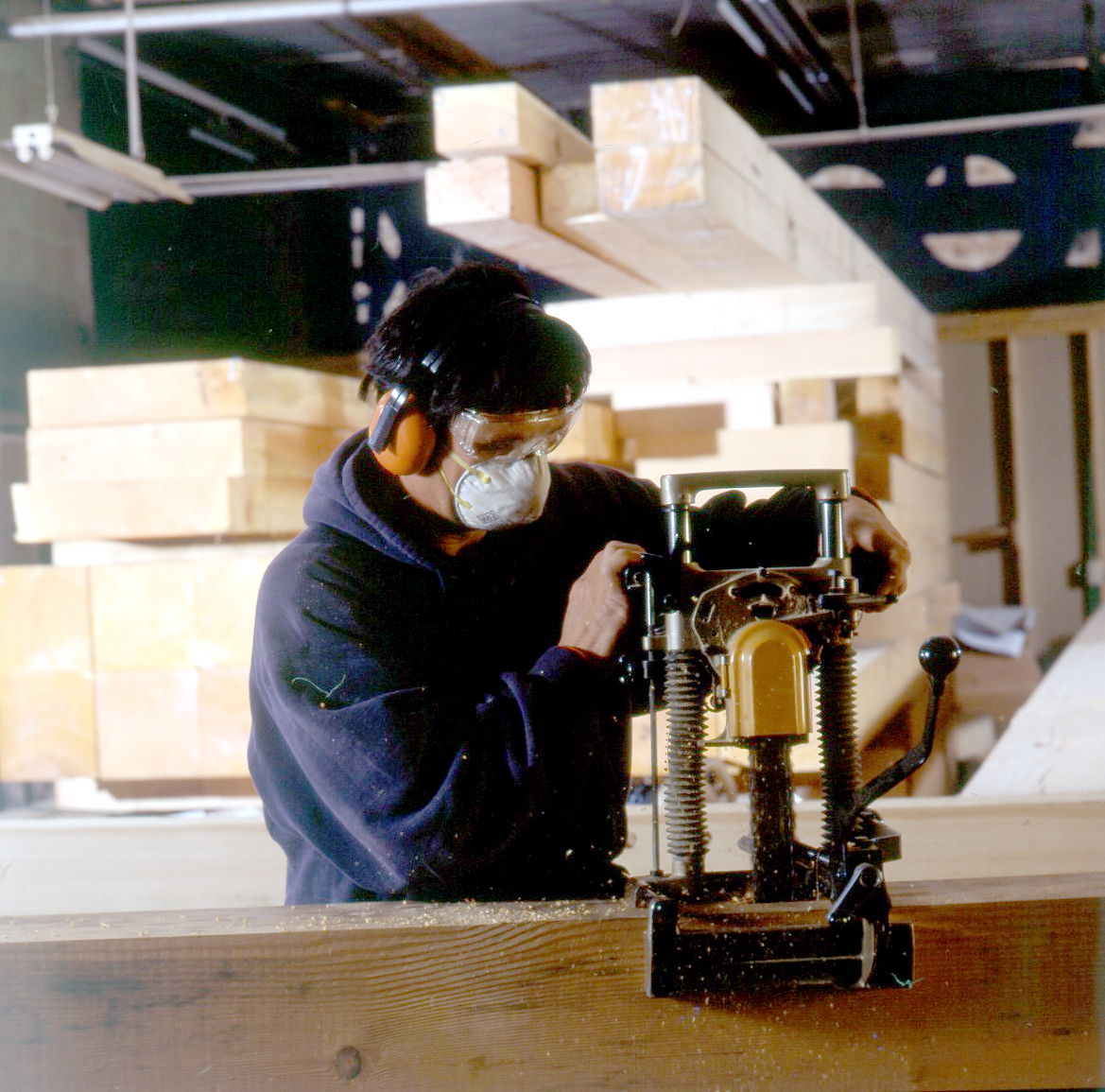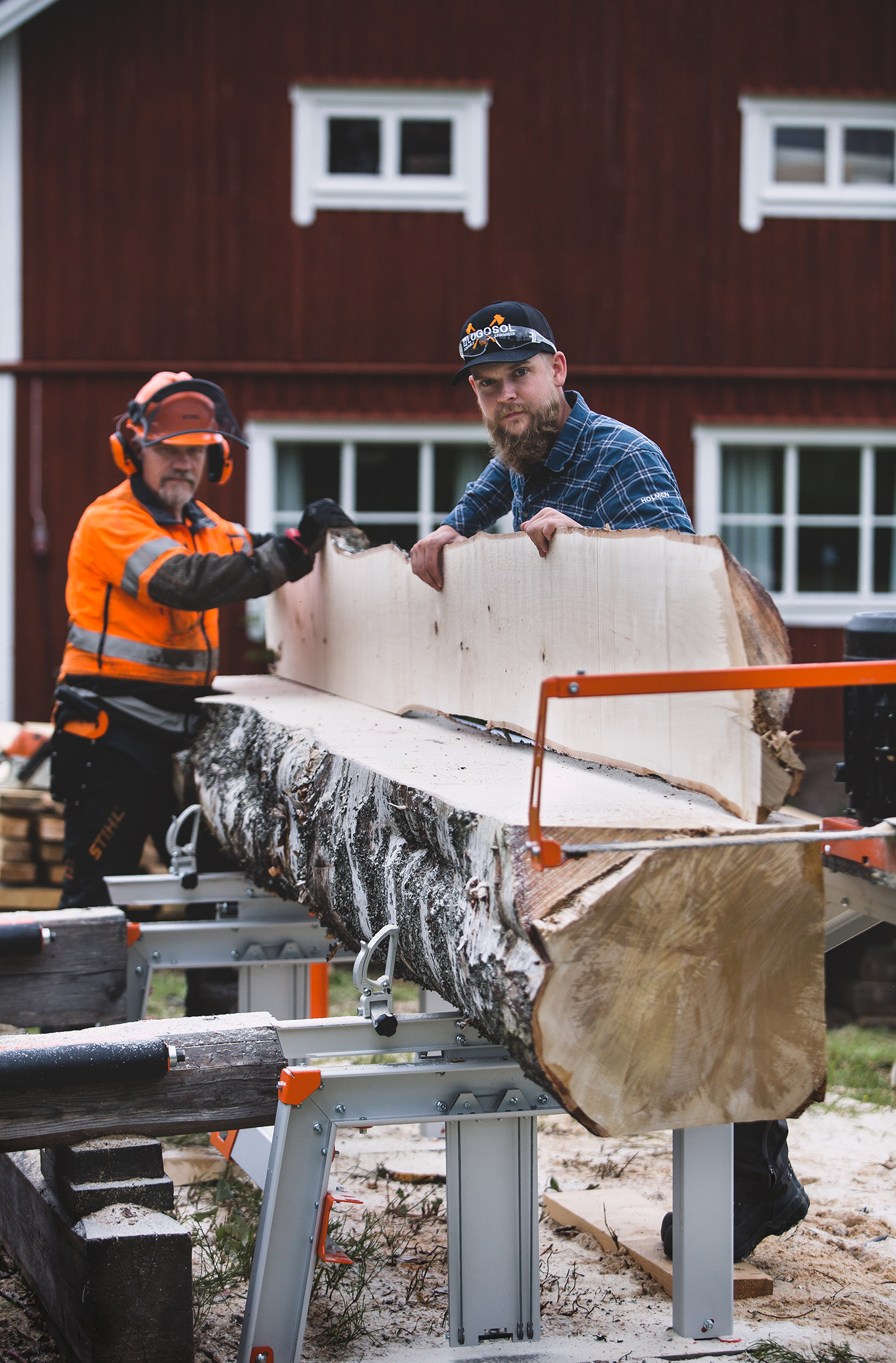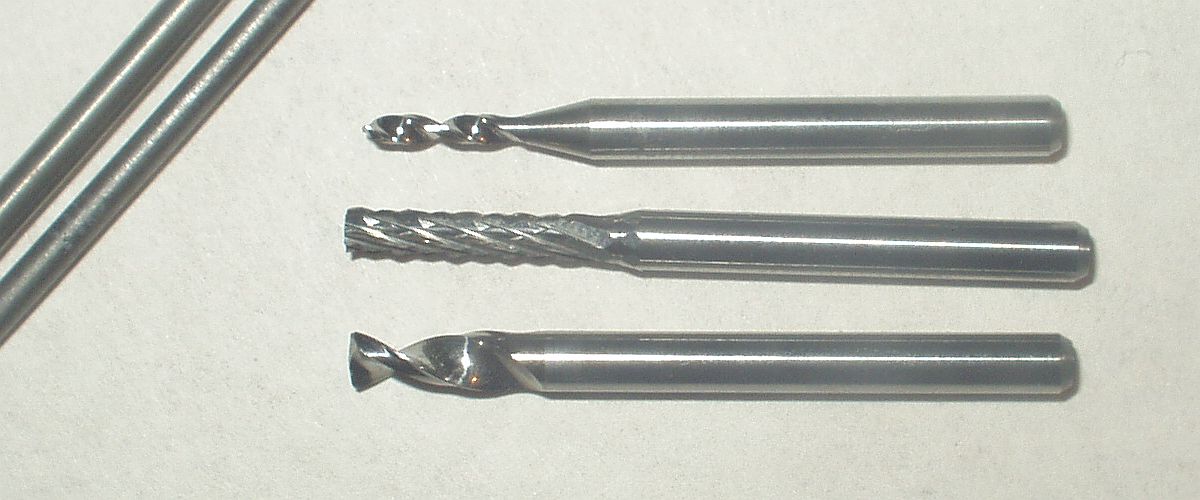|
Saw Chain
The saw chain, or cutting chain, is a key component of a chainsaw. It consists of steel links held together by rivets, and superficially resembles the bicycle-style roller chain, although it is closer in design to a leaf chain. Its key differences are sharp cutting teeth on the outside of the chain loop, and flat drive links on the inside, to retain the chain on the saw's bar and allow propulsion by the engine or motor. Saw chains (and chainsaws generally) are used for cutting wood. This may be for harvesting trees for pulp or timber, for tree surgery, or for processing firewood. Whether for hand-held chainsaws, Harvester (forestry), mechanical timber harvesters or chain mortisers, the saw chain has undergone dramatic development since its invention. Modern chains designed for high power, high-speed sawing applications will vastly outperform older designs, while allowing a far greater degree of safety and reliability in use. Principles of saw chain operation Saw chains operate b ... [...More Info...] [...Related Items...] OR: [Wikipedia] [Google] [Baidu] |
Chainsaw
A chainsaw (or chain saw) is a portable handheld power saw, power saw that cuts with a set of teeth attached to a rotating chain driven along a guide bar. Modern chainsaws are typically gasoline or electric and are used in activities such as tree felling, limbing, Log bucking, bucking, pruning, cutting firebreaks in wildland fire suppression, harvesting of Wood fuel#Firewood, firewood, for use in Chainsaw carving, chainsaw art and chainsaw mills, for cutting concrete, and cutting ice. Precursors to modern chainsaws were first used in surgery, with patents for wood chainsaws beginning in the late 19th century. A chainsaw comprises an engine, a drive mechanism, a guide bar, a cutting chain, a tensioning mechanism, and safety features. Various safety practices and working techniques are used with chainsaws. History In surgery A "flexible saw", consisting of a fine serrated link chain held between two wooden handles, was pioneered in the late 18th century (–1785) by two Scot ... [...More Info...] [...Related Items...] OR: [Wikipedia] [Google] [Baidu] |
Softwood
Scots pine, a typical and well-known softwood Softwood is wood from gymnosperm trees such as conifers. The term is opposed to hardwood, which is the wood from angiosperm trees. The main differences between hardwoods and softwoods is that the softwoods completely lack vessels (pores). The main softwood species (pines, spruces, larches, false tsugas) also have resin canals (or ducts) in their structure. Characteristics Softwood is wood from gymnosperm trees such as pines and spruces. Softwoods are not necessarily softer than hardwoods. The hardest hardwoods are much harder than any softwood, but in both groups there is enormous variation with the range of wood hardness of the two groups overlapping. For example, balsa wood, which is a hardwood, is softer than most softwoods, whereas the longleaf pine, Douglas fir, and yew softwoods are much harder than several hardwoods. Several specific natural, macroscopic and microscopic features of wood are used in the identification p ... [...More Info...] [...Related Items...] OR: [Wikipedia] [Google] [Baidu] |
Chainsaws
A chainsaw (or chain saw) is a portable handheld power saw that cuts with a set of teeth attached to a rotating chain driven along a guide bar. Modern chainsaws are typically gasoline or electric and are used in activities such as tree felling, limbing, bucking, pruning, cutting firebreaks in wildland fire suppression, harvesting of firewood, for use in chainsaw art and chainsaw mills, for cutting concrete, and cutting ice. Precursors to modern chainsaws were first used in surgery, with patents for wood chainsaws beginning in the late 19th century. A chainsaw comprises an engine, a drive mechanism, a guide bar, a cutting chain, a tensioning mechanism, and safety features. Various safety practices and working techniques are used with chainsaws. History In surgery A "flexible saw", consisting of a fine serrated link chain held between two wooden handles, was pioneered in the late 18th century (–1785) by two Scottish doctors, John Aitken and James Jeffray, for symphysiot ... [...More Info...] [...Related Items...] OR: [Wikipedia] [Google] [Baidu] |
Chainsaw Safety Clothing
Safety practices generally recommend that chainsaw users wear protective clothing, also known as personal protective equipment, while operating chainsaws. There is general agreement worldwide on what clothing is suitable, but local jurisdictions have specific rules and recommendations. Clothing Helmet The helmet offers some protection for the user's head against impact by the cutter bar of the chainsaw, should a 'kickback' occur. Kickback is when the running chainsaw jumps up unexpectedly out of the cut, thus endangering the saw operator. Helmet protection can only be successful if the chain brake has been operated to stop the saw chain, since a chain running at full speed can easily cut into the helmet. The helmet, and its eye protection guard, also protect against impacts from small falling or flying objects, such as dead twigs and branches from a tree being felled. Exposure to the sun causes the plastic of the helmet to weaken over time, so it is recommended that a helmet ... [...More Info...] [...Related Items...] OR: [Wikipedia] [Google] [Baidu] |
Chainsaw Safety Features
Chainsaws and chainsaw operations have specific risk control methods. Chainsaws incorporate numerous safety features common to many engine-driven power tools. Manufacturers have invented numerous design features to improve safety. Some features have become ''de facto'' standards, and others are legal requirements in particular jurisdictions. Best practice dictates that an operator should inspect the saw before starting work and only operate the saw if all the safety features are properly functional. Additional safety features are a significant commercial advantage to chainsaw producers. Companies continue to develop new features over time. Most chainsaw safety features are focused on the kickback problem, and seek to either avoid it (chain and bar design), or to reduce the risk of injury should it occur ( chain brakes). In addition to the safety features built into the chainsaw, operators should also wear specific chainsaw safety clothing. Most older saws have few or none of the ... [...More Info...] [...Related Items...] OR: [Wikipedia] [Google] [Baidu] |
Bicycle Chain
A bicycle chain is a roller chain that transfers power (physics), power from the Bicycle pedal, pedals to the Drive wheel, drive-Bicycle wheel, wheel of a bicycle, thus propelling it. Most bicycle chains are made from carbon steel, plain carbon or alloy steel, but some are nickel electroplating, nickel-plated to prevent rust, or simply for aesthetics. History Obsolete chain designs previously used on bicycles included the bar-link chain, block chain, the skip-link chain, and the Simpson lever chain. The first chains were of a simple, bushing-less design. These had inherent reliability problems and a bit more friction (and mechanical efficiency losses) than modern chains. With these limitations in mind, the Nevoigt brothers, of the German Diamant (German bicycle company), Diamant Bicycle Company, designed the roller chain in 1898, which uses bushings. More recently, the "bushingless roller chain" design has superseded the bushed chain. This design incorporates the bearing surfac ... [...More Info...] [...Related Items...] OR: [Wikipedia] [Google] [Baidu] |
Timber Framing
Timber framing () and "post-and-beam" construction are traditional methods of building with heavy Beam (structure), timbers, creating structures using squared-off and carefully fitted and Woodworking joints, joined timbers with joints secured by large wooden pegs. If the Structural system, structural frame of Load-bearing wall, load-bearing timber is left exposed on the exterior of the building it may be referred to as half-timbered, and in many cases the infill between timbers will be used for decorative effect. The country most known for this kind of architecture is Germany, where timber-framed houses are spread all over the country. The method comes from working directly from logs and trees rather than pre-cut Lumber#Dimensional lumber, dimensional lumber. Artisans or framers would gradually assemble a building by hewing logs or trees with broadaxes, adzes, and draw knife, draw knives and by using woodworking tools, such as hand-powered Brace (tool), braces and Auger (dril ... [...More Info...] [...Related Items...] OR: [Wikipedia] [Google] [Baidu] |
Mortice And Tenon
A mortise and tenon (occasionally mortice and tenon) is a joint that connects two pieces of wood or other material. Woodworkers around the world have used it for thousands of years to join pieces of wood, mainly when the adjoining pieces connect at right angles, though it can be used to connect two work pieces at any angle. Mortise-and tenon-joints are simple, strong, and stable, and can be used in many projects and which give an attractive look. They are either glued or friction-fitted into place. This joint is difficult to make, because of the precise measuring and tight cutting required; as such, modern woodworkers often use machinery specifically designed to cut mortises and matching tenons quickly and easily. Still, many woodworkers cut them by hand in a traditional manner. There are many variations of this type of joint, but its basic structure has two components, the ''mortise'' hole and the ''tenon'' tongue. The tenon, formed on the end of a member generally referred to ... [...More Info...] [...Related Items...] OR: [Wikipedia] [Google] [Baidu] |
Chain Mortiser
A mortiser or morticer is a specialized woodworking machine used to cut square or rectangular holes in a piece of lumber (timber), such as a mortise in a mortise and tenon joint. Square chisel mortiser The square chisel mortiser (also called ''hollow chisel mortiser''), similar to a drill press in many respects, combines the cutting of a four-sided chisel with the action of a drill bit in the center. The bit clears out most of the material to be removed, and the chisel ensures the edges are straight and clean. This device was invented in 1874 by Robert and Ralph Greenlee (founders of the Greenlee Company). The first square chisel lever mortisers were purely manual and relied on the operator pulling down on a large lever to push the chisel through the timber. An improvement was to place a rotating cylindrical auger inside a hollow chisel. This helps to clear chips up the centre of the chisel. As electric power became easily available, the auger developed as a drill bit and becam ... [...More Info...] [...Related Items...] OR: [Wikipedia] [Google] [Baidu] |
Chainsaw Mill
A chainsaw mill or PortaMill or Logosol sawmill is a type of sawmill incorporating a chainsaw, that is used by one or two operators to mill logs into lumber for use in furniture, construction and other uses. Although often used as a generic term, Alaskan Mill is a registered trademark of Granberg International. Description The mill attachment consists of a pair of clamping brackets connected to a rectangular frame which is attached to the bar of the chainsaw. The rails ride for the first cut on a guide system, plank or on a metal ladder which is screwed to the log (but not so tightly that the guide is pulled out of plane), and then on the previously cut surface of the log, and guide the chainsaw blade through the log at a consistent depth so that planks of a chosen thickness are cut. The distance between the rails and the bar determines this thickness and it can be adjusted by moving the rails along the depth posts at each end of the mill attachment. During use it is important ... [...More Info...] [...Related Items...] OR: [Wikipedia] [Google] [Baidu] |
Tungsten Carbide
Tungsten carbide (chemical formula: ) is a carbide containing equal parts of tungsten and carbon atoms. In its most basic form, tungsten carbide is a fine gray powder, but it can be pressed and formed into shapes through sintering for use in industrial machinery, engineering facilities, molding blocks, cutting tools, chisels, abrasives, armor-piercing bullets and jewelry. Tungsten carbide is approximately three times as stiff as steel, with a Young's modulus of approximately 530–700 GPa, and is twice as dense as steel. It is comparable with corundum (α- ) in hardness, approaching that of a diamond, and can be polished and finished only with abrasives of superior hardness such as cubic boron nitride and diamond. Tungsten carbide tools can be operated at cutting speeds much higher than high-speed steel (a special steel blend for cutting tools). Tungsten carbide powder was first synthesized by H. Moissan in 1893, and the industrial production of the cemented form starte ... [...More Info...] [...Related Items...] OR: [Wikipedia] [Google] [Baidu] |
Steel
Steel is an alloy of iron and carbon that demonstrates improved mechanical properties compared to the pure form of iron. Due to steel's high Young's modulus, elastic modulus, Yield (engineering), yield strength, Fracture, fracture strength and low raw material cost, steel is one of the most commonly manufactured materials in the world. Steel is used in structures (as concrete Rebar, reinforcing rods), in Bridge, bridges, infrastructure, Tool, tools, Ship, ships, Train, trains, Car, cars, Bicycle, bicycles, Machine, machines, Home appliance, electrical appliances, furniture, and Weapon, weapons. Iron is always the main element in steel, but other elements are used to produce various grades of steel demonstrating altered material, mechanical, and microstructural properties. Stainless steels, for example, typically contain 18% chromium and exhibit improved corrosion and Redox, oxidation resistance versus its carbon steel counterpart. Under atmospheric pressures, steels generally ... [...More Info...] [...Related Items...] OR: [Wikipedia] [Google] [Baidu] |







